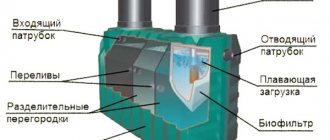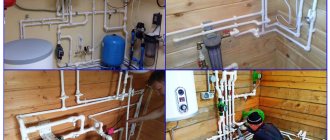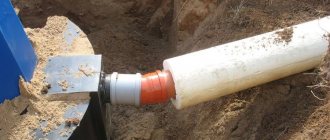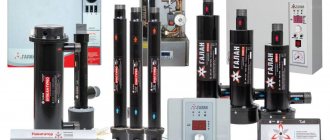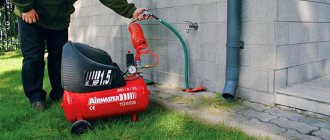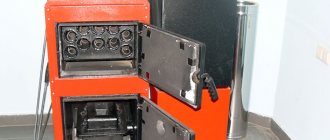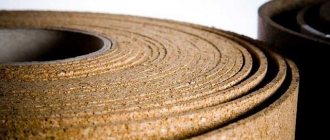When laying a sewer system, the owners are faced with the question of choosing pipes. And this is not only what material they are made of, but also their dimensions, namely length and diameter. And if there are no difficulties with the length, then when choosing the diameter of the pipe, a hitch arises.
The performance of the entire system depends on this parameter. Therefore, this issue must be approached responsibly. Today, the construction markets offer a wide range of sewer components of any length, diameter, etc. So there should not be any difficulties in choosing the diameter of the sewer pipe required for a particular system.
Types of pipes
There are 2 main materials for making pipes: plastic and metal. The first, in turn, is divided into 3 types:
- polyvinyl chloride (PVC);
- polyethylene (PET);
- polypropylene (PP).
All of them can be easily found on the market.
The standard diameter of sewer pipes is indicated in the technical specifications and most often it ranges from 5 to 12 cm. But there are types of sewer pipes with a smaller diameter, which are also made according to technical specifications. conditions, which will facilitate their selection for different systems.
Pipes are divided into categories, depending on the highway on which they will be used (each diameter is 16 cm):
- SN-2. Such pipes are made of lightweight material, therefore they are used in areas with minimal load (domestic sewerage indoors, residential areas without traffic load).
- SN-4. They are denser than the previous ones, so they are purchased for a sewer system that needs to be installed under a highway, where traffic is not very strong.
- SN-8. The densest pipes, which are also used under highways, neighborhood highways, in factories and where there is frequent traffic.
Types of pipes Source domstrousam.ru
During the installation of the system, not only pipes are used, but also various connections and adapters:
- Turns that allow you to change direction.
- Adapters and splitters for forks.
- Gearboxes that connect pipes with different circumferences to each other.
- Compensators that reduce the effect of high temperatures.
- Couplings and clamps.
It is important to remember that the sewer must have a minimum number of bends and forks. This will make the structure more stable and reduce the cost of the entire installation. When installing PVC sewer systems, keep in mind that most of the cost is in the connections, not the pipes.
Types of connections Source infotruby.ru
Advantages and disadvantages of PVC
PVC has a number of advantages, thanks to which they have proven themselves well in the market:
- Resistant to corrosion.
- Immune to damage by microorganisms.
- A large assortment.
- Availability of various diameters.
- Resistant to temperature differences and pressure changes, as well as chemicals.
- Can handle heavy loads.
- Do not deteriorate after prolonged use.
- Simply mounted to any sewer.
- They do not emit harmful fumes.
- Due to the fact that PVC pipes have a smooth surface, they are less susceptible to the formation of build-up or sediment.
- Do not allow electric current to pass through.
- Light enough.
- Inexpensive compared to other materials.
The main difference between plastic pipes and metal ones is that the former have a larger range, and the latter are most often made of cast iron. One of the disadvantages is that PVC is not as durable as its competitor, but will last at least 50 years.
See also: Catalog of house projects with 2 or 3 bathrooms.
Features of sewer line for kitchen sink
As a rule, the sewerage system in the kitchen under the sink is the highest point of the horizontal section of the intra-apartment line. The installation height of the sink is determined either by the size of the kitchen unit or by the personal preferences of the homeowner. In addition, you should take into account the height of the starting point of the sunbed and add to it the difference in levels to ensure the required slope. This is important if the kitchen, bathroom and toilet are connected to one horizontal deck, which is connected to a common sewer riser. This scheme is used in multi-storey buildings, although it is often used in private housing construction because of its convenience and efficiency.
diagram - example
The upper permissible limit for the height of the sewer outlet under the sink in the kitchen is considered to be 50 - 55 cm. Above is the siphon and the sink itself. As a rule, sewer pipes are not installed even at this distance from the floor. This is too high and can only be found on long sections of a horizontal intra-house system, where the need to ensure proper slope forces the pipes to be raised to a greater height. In addition, the specifics of connecting kitchen plumbing allows drainage to be discharged into pipes located at any height not exceeding the level of the lowest point of the siphon. Most often, a tee or outlet is installed on the deck chair, to which a corrugated tube is connected, connected to the sink siphon. A hidden method of installing kitchen sewerage is extremely rare; most often the pipes are hidden behind the lower tier of a furniture set.
There are sinks located on island-type cabinets. They are installed in the middle of the room, which requires hidden installation of the sewer system below the floor level. Such systems can only be created in private homes and planned in advance when creating a general house project. The sewer bed is laid in the trench, all other plumbing fixtures are connected to vertical outlets installed at the required points in the line.
Properties of pipes and their purpose
The place where pipes are used directly depends on their physical properties. Polyvinyl chloride is one of the types of plastic that does not deform from high temperatures, is frost-resistant, and does not lose its properties when heated and frozen. The main purpose of PVC is to install them in water supply and drainage systems, and the place where they can be used depends on the thickness and density of the walls:
- sewerage;
- pressure system;
- gravity drain.
PVC sewerage Source nomitech.ru
Pipes are divided into these subtypes only after they have undergone certain processing. Plasticized PVC PVC-U is considered one of the best in terms of its parameters, which determine the location where such a pipe can be used. The following indicators are characteristic of PVC:
- Good strength against mechanical damage and three-layer production technology, as well as external corrugation, thanks to which it can be installed deep underground.
- Resistance to external factors.
- The highest wastewater temperature that such a pipe can withstand is +65 °C, the lowest is -10 °C.
It can also be noted that the weight of 1 m of plastic pipe is only 2 kg, and the greatest strength is 50 MPa.
Laying underground Source experttrub.ru
Calculation of wastewater volume
In order for the water drainage system to operate as efficiently as possible, it is necessary to accurately calculate the average amount of precipitation falling in a particular area during the month.
To do this, you can use the formula taken from SNiP 2.04.03-85: Q = q20 x F x Ψ
Here the indicators are the following data:
- Q - average volume of rain or melt water that will need to be drained from the site;
- q20 is the intensity of rain or snow precipitation in a specific region of Russia. The data is recorded in SNiP tables for each specific area;
- F is the total area of all roofs and platforms from which storm or snow wastewater will be drained;
- Ψ is the correction factor, which allows you to achieve the most accurate calculations of the average volume of water for disposal. This indicator completely depends on the type of coating from which the liquid will be drained.
The coefficient indicators are also specified in the tables of SNiP 2.04.03-85 and have the following wording:
- Roofs of any type - coefficient is 1;
- Asphalt platforms and paths - coefficient 0.95;
- For sites and objects made of concrete - the coefficient is 0.85;
- For crushed stone with bitumen admixture - coefficient 0.6;
- And for simple crushed stone in its pure form - 0.4.
Thanks to the use of this formula, it is possible to calculate as accurately as possible the volumes of rain or melted snow water that will “attack” the object in each season.
PVC pipe sizes for various premises
When choosing a pipe, an important parameter is its diameter, which may differ depending on the purpose. It is also important to remember that the sewer system will function without problems if the size is selected correctly.
There is a table of the diameter of PVC sewer pipes, which indicates parameters that will help simplify the choice of material:
| Device | PVC diameter, cm | ||
| Bath | 0,40 | ||
| Shower room | 0,40 | ||
| Washing | 0,30-0,40 | ||
| Combined drain | 0,50 | ||
| Bidet | 0,30-0,40 | ||
| Toilet | 0,100 | ||
| Sink | 0,40 | ||
| Central riser | 0,100 | ||
| Branches from the riser | 0,65-0,75 | ||
The pipeline parameters include:
- diameters on both sides;
- internal and nominal cross-section;
There is also a table of PVC sewer pipe sizes presented below.
| DN(cm) | DS min(cm) | Wall thickness | Bell length | |||
| e (cm) | e2 min (cm) | e3 min (cm) | A min (cm) | C max (cm) | ||
| 0,32 | 0,32 | 0,18 | 0,16 | 0,10 | 0,24 | 0,18 |
| 0,4 | 0,40 | 0,18 | 0,16 | 0,10 | 0,26 | 0,18 |
| 0,5 | 0,50 | 0,18 | 0,16 | 0,10 | 0,28 | 0,18 |
| 0,75 | 0,75 | 0,19 | 0,17 | 0,11 | 0,33 | 0,18 |
| 0,11 | 0,110 | 0,27 | 0,24 | 0,15 | 0,36 | 0,22 |
This table of sizes of plastic sewer pipes will help you decide how much material you need to take and what kind of material.
Extended table for choosing diameter Source vse-o-kanalizacii.ru
Sink drain height
The standard sewer height for a bathroom sink is tied to the level of the horizontal pipeline. Since most types of sinks have cabinets, pedestals or other additional items that hide the outlet set, there is no fundamental importance of height. For wall-mounted sinks, where the pipeline from the siphon immediately goes into the wall, the height of the location is selected by the method of preliminary installation and fitting of the outlet point locally. Most often, a vertical recess is made in the wall, in which a sewer outlet is located, and a hole for entering the wall is made in a tile, behind which it is hidden.
You may also like: Step-by-step connection of a washing machine to water supply and sewerage
This installation method is very attractive, but inspection of pipes or repairs in the event of leaks becomes extremely difficult, as with all hidden installation options. Pipe connections must be made as tightly as possible, using sealant or other means to prevent leaks.
Switching from cast iron to plastic
There are situations when cast iron is installed in the sewerage system and it needs to be changed to PVC. In this case, you must first dismantle the old drainage system:
- Cast iron is cut from the top at a distance of 7.5-10.5 cm from the ceiling, and approximately 80 cm from the tee is left below, the rest is removed with a metal disc. These actions need to be done only until the middle of the structure.
- After this, the rest of the cast iron is removed with a chisel (to do this, it must be inserted into the drilled place and hit with a hammer, then it will fly apart).
- Otherwise, you can take a crowbar or a hammer drill to clear the cement from the pipe, and then use the chisel again.
- After this part of the cast iron is removed, it is necessary to remove the remaining concrete from below and saw off the lower part from the tee, leaving 3-7 cm.
What a joint looks like Source yelpcdn.com
What does it depend on?
Each kitchen device requires special attention. It is worth paying attention to the type of sink . For example, private houses are characterized by an island-type installation. There are no specific rules; each owner does what is convenient for him.
It is also worth paying attention to the following factors:
- many choose the height of the kitchen module based on their own height or the average value of all household members, then they begin to calculate the allocation;
- The type of sink is taken into account. Today you can often find hidden installations that require precise markings to avoid damage in the future.
Speaking about the growth of household members, the following points can be highlighted:
- if two tall adults live in the house, then it is better to install the sink at a height of 80 cm - this is the distance between the floor to the sink/countertop;
- if there are teenagers, 70 cm is considered average;
- if there are small children in the house - 60 cm.
The average height of a kitchen module is 75-85 cm according to the sanitary standard . Based on the type and model of the sink, the owner independently determines the point for the sewer outlet. If the installation is not of a hidden nature, it is easier to install it according to SNIP standards. Example:
Briefly about the main thing
There are 2 types of pipes: metal and plastic. The former are made only from cast iron, and the latter from three types of raw materials: polyvinyl chloride (PVC); polyethylene (PET); polypropylene (PP).
When installing a drainage system, PVC is most often used, which greatly facilitates the operation of the sewerage system. These pipes can withstand heavy loads (road and neighborhood highways), can serve at temperatures down to minus 10 ° C, and are also treated on both sides so that no sediment remains on the smooth surface after rain or mechanical stress. Also, such a pipe can be easily installed in place of an old cast iron one. They come in several types in diameter and are connected to each other by adapters.
| Additionally The exhibition of houses “Low-Rise Country” expresses sincere gratitude to the specialists for their assistance in creating the material. – supplier of water supply and heat supply systems for any facilities, from the world's leading brands. The company also develops and installs automated metering systems for energy consumption. If you need more detailed advice, you can use the following contacts: website: www.makipa.ru email: phone: +7 (495) 134-48-01 |
Ratings 0
Read later

